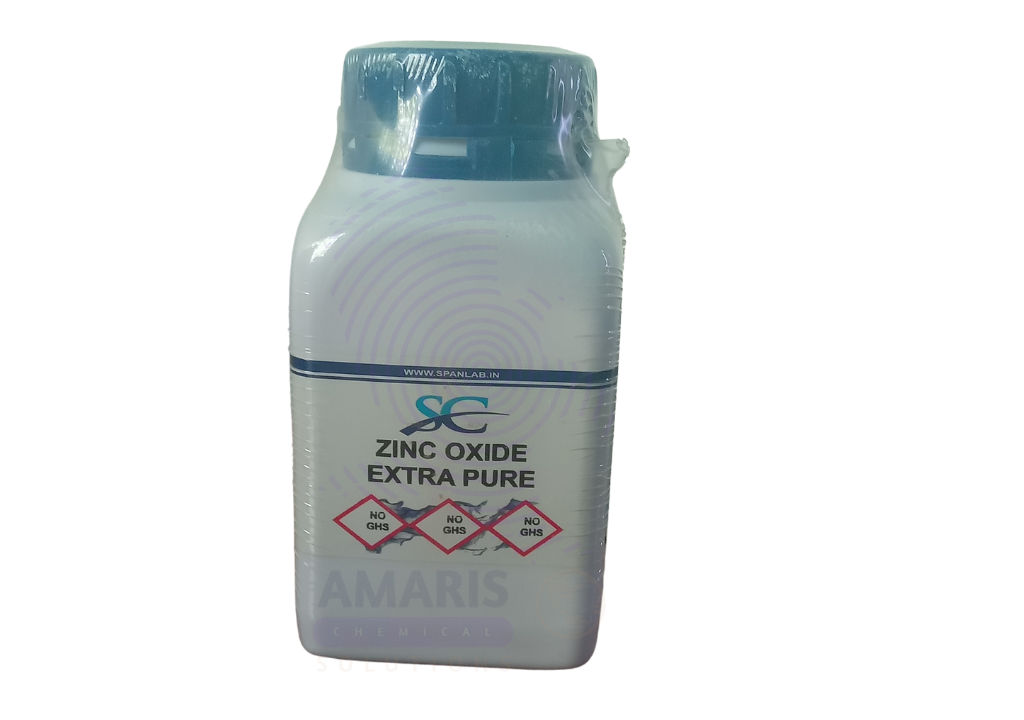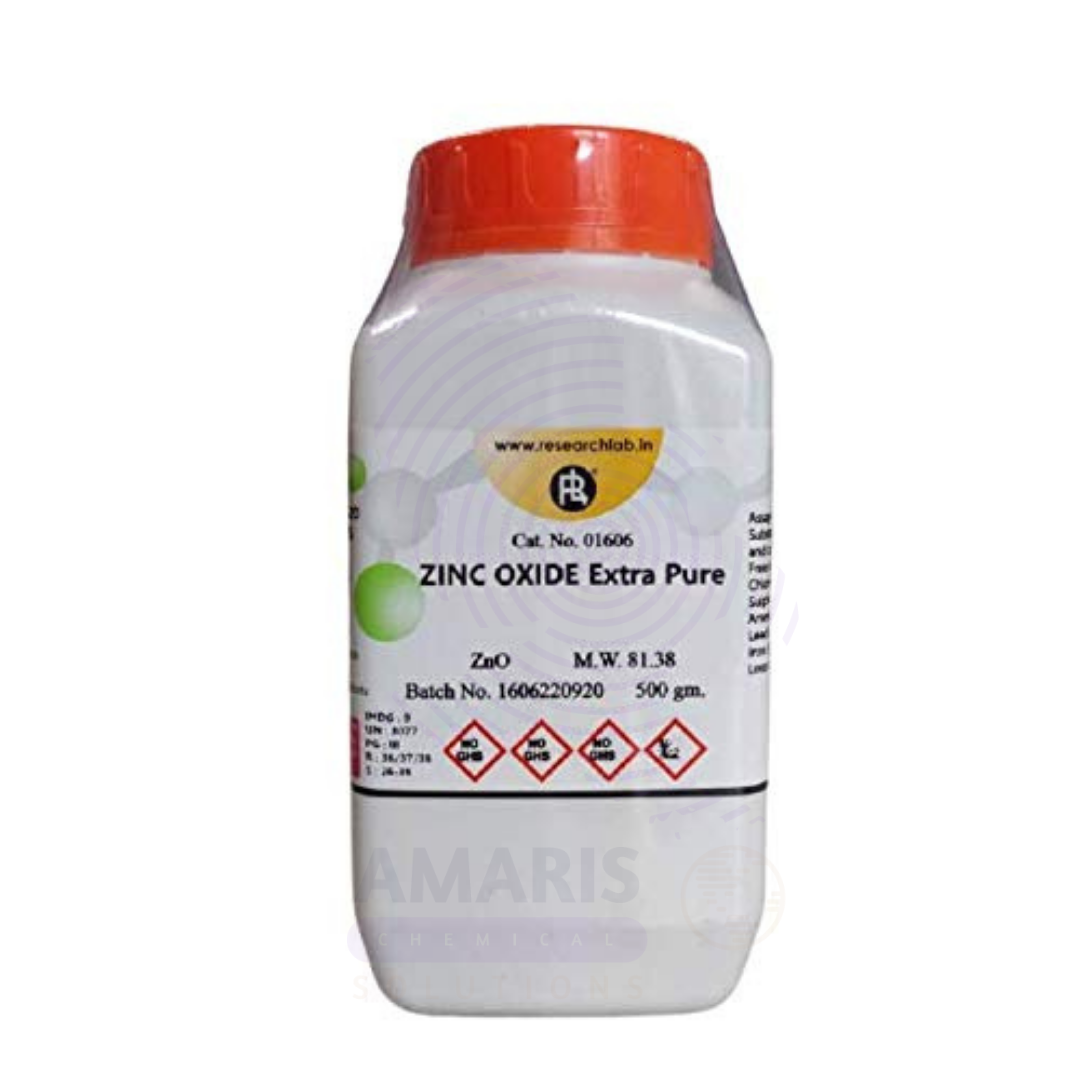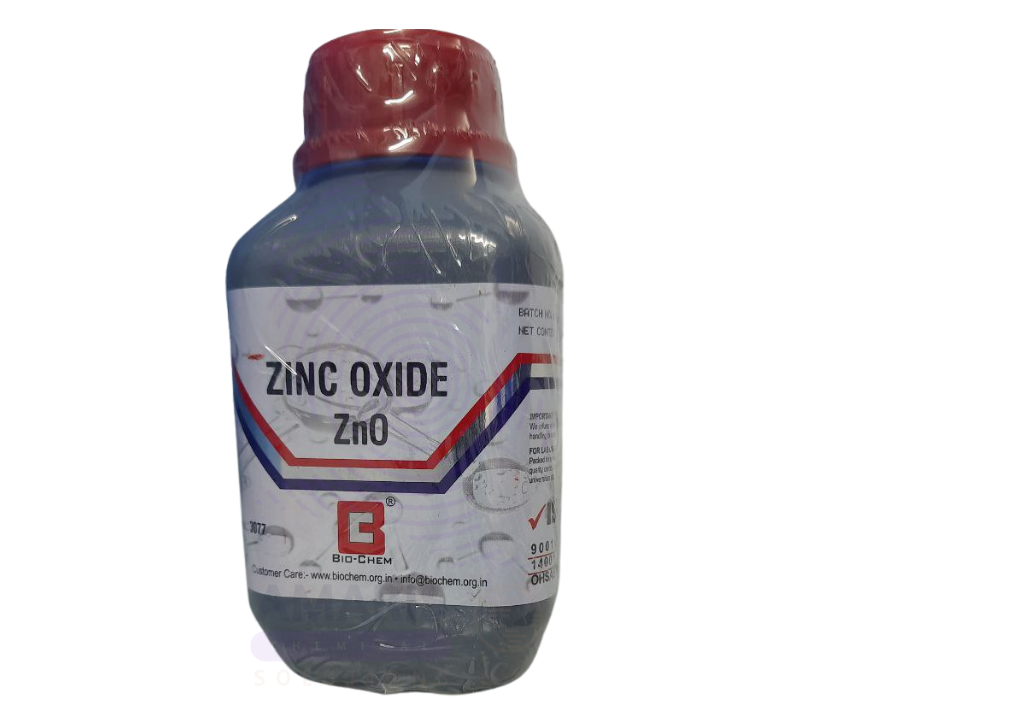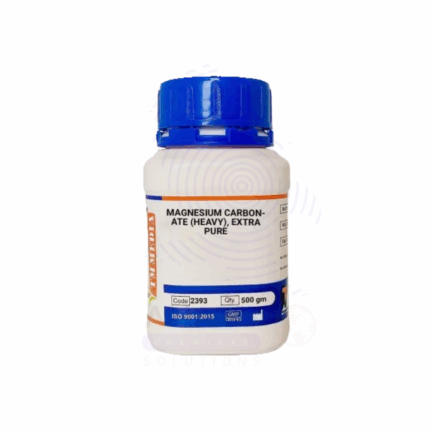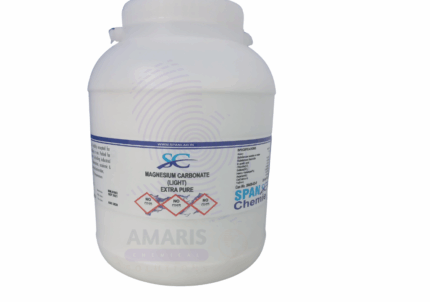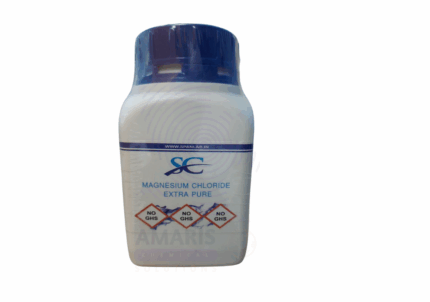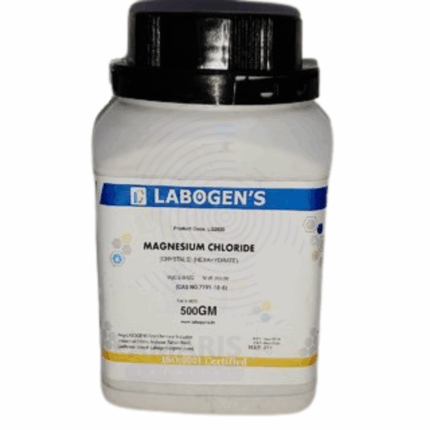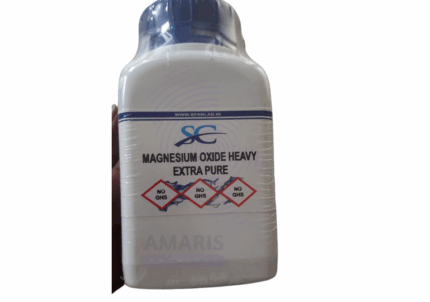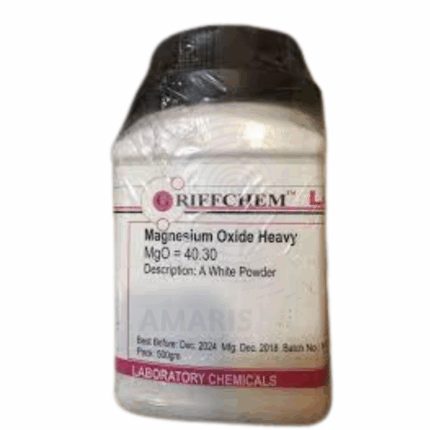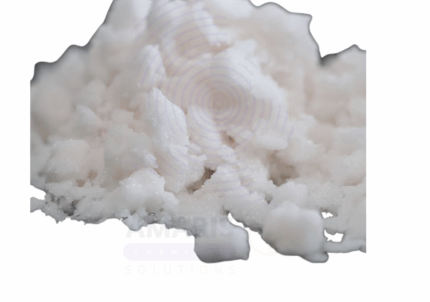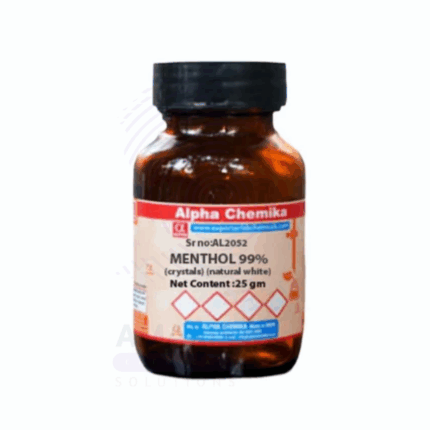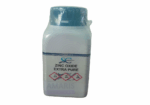

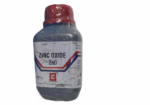

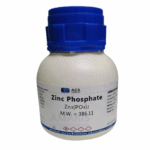
Zinc Oxide Extra Pure
$ 19.11 Original price was: $ 19.11.$ 18.98Current price is: $ 18.98.
Zinc Oxide Extra Pure is a high-purity, white, fine powder used extensively in laboratory, research, and pharmaceutical-grade formulations. Renowned for its amphoteric character, it reacts with both acids and bases, making it highly versatile in chemical synthesis and pH-related experiments. In laboratory research, it plays a key role in analytical chemistry, photocatalysis, pigment studies, and semiconducting material research. It is also valued in pharmaceutical and cosmetic R&D for its antimicrobial, UV-reflective, and healing properties. In environmental and materials science labs, Zinc Oxide is studied for its potential in pollutant degradation, corrosion resistance, and nanomaterial development. Its Extra Pure grade ensures suitability for applications demanding precise, consistent purity and low impurity levels. Although generally safe to handle, care should be taken to avoid inhaling fine dust or releasing large amounts into aquatic environments due to its toxicity to aquatic life.
Zinc Oxide Extra Pure
PRIMARY USES
- Analytical Reagent & Laboratory Applications:
- Used in qualitative and quantitative chemical analysis, including gravimetric analysis of zinc and as a reference oxide in materials testing
- Serves as a precursor or reagent in the synthesis of organozinc compounds and other zinc-based salts
- Employed in laboratory demonstrations of amphoteric behavior, reacting with both acids and bases
- Functions as a component in gas sensors and semiconducting material research in academic and industrial R&D
- Studied in photocatalytic degradation experiments due to its UV-activated properties
- Pharmaceutical & Cosmetic Research:
- Used in lab-scale formulation studies for ointments, creams, and lotions due to its antimicrobial and UV-reflecting properties
- Studied for its skin-protective properties, including anti-inflammatory and wound-healing activity
- Investigated as a UV filter in sunblock formulations under research-grade testing
- Included in microbiological experiments for evaluating antimicrobial efficacy against skin pathogens
- Material Science & Ceramics Research:
- Used in the development and testing of ceramic glazes, enamel coatings, and advanced ceramics
- Acts as a flux and opacifier in lab-scale glass and ceramic formulations
- Studied for structural and electrical properties in research on piezoelectric materials and ferrites
SECONDARY USES
- Pigments & Coating Research:
- Studied as a white pigment in coating systems for opacity, brightness, and corrosion resistance
- Used in anticorrosive paint formulations, especially in marine and industrial surface coatings
- Investigated for photocatalytic self-cleaning coatings and protective films
- Environmental & Green Chemistry Research:
- Studied for its photocatalytic applications in wastewater treatment and air purification
- Evaluated for heavy metal remediation and removal of organic pollutants via UV degradation pathways
- Nanotechnology & Advanced Materials:
- Employed in the synthesis and study of ZnO nanoparticles for research on nanomaterials, nanophotonics, and nanomedicine
- Used in thin-film development for electronics, sensors, solar cells, and optoelectronic applications
- Investigated for piezoelectric and semiconductor behavior in MEMS/NEMS device research
1. Basic Identification Attributes
Chemical Name: Zinc Oxide
CAS Number: 1314-13-2
HS Code: 2817.00.00
Molecular Formula: ZnO
Synonyms:
- Zinc white
- Calamine (in some contexts)
- Zinc monoxide
2. Physical & Chemical Properties
Physical State: Solid (fine powder or soft agglomerates)
Color & Odor: White, odorless
Melting Point: ~1975 °C (with decomposition)
Boiling Point: Sublimes at ~2360 °C
Density/Specific Gravity: ~5.6 g/cm³
Solubility:
- Practically insoluble in water
- Soluble in acids and alkalis, forming zinc salts and complexes
pH Level: ~7.0 in aqueous dispersion
Vapor Pressure & Volatility: Negligible at room temperature
Flash Point: Not applicable
Autoignition Temperature: Not applicable
Viscosity: Not applicable
3. Safety & Hazard Attributes
Hazard Class (GHS Classification):
- Hazardous to aquatic environment, acute and chronic (Category 1)
- May cause mechanical eye and respiratory irritation
NFPA Ratings: - Health: 1
- Flammability: 0
- Reactivity: 0
Exposure Limits: - OSHA PEL: 5 mg/m³ (respirable fraction, as zinc oxide fume)
- ACGIH TLV: 2 mg/m³ (respirable), 10 mg/m³ (STEL, fume)
Reactivity: - Stable under normal conditions
- Incompatible with strong acids, strong bases, and aluminum at high temperatures
4. Storage & Handling Attributes
Storage Conditions:
- Store in a cool, dry, and well-ventilated area
- Protect from moisture and contamination
Incompatible Materials: - Strong acids
- Strong bases
- Reactive metals such as aluminum or magnesium (especially at elevated temperatures)
Container Type: - Sealed polyethylene or HDPE containers
Shelf Life & Expiration Date: - Stable indefinitely if stored properly
Special Handling Requirements: - Avoid generating dust
- Use appropriate dust extraction or filtration in processing areas
5. Regulatory & Compliance Attributes
Regulatory Status:
- Listed under REACH, TSCA, and major chemical inventories
- Approved for use in pharmacopeial applications (USP, FCC, BP — subject to grade and purity)
Transportation Restrictions: - Not regulated as a hazardous material for transport
Waste Disposal Method: - Dispose in accordance with local environmental regulations
- Avoid release to waterways due to aquatic toxicity
6. Environmental & Health Impact
Ecotoxicity:
- Toxic to aquatic life even in small quantities (particularly nanoparticulate forms)
Persistence in Environment: - Insoluble and persistent in soils and sediments
Carcinogenicity/Mutagenicity: - Not classified as carcinogenic or mutagenic
Biodegradability: - Inorganic; not biodegradable, but environmentally stable under most conditions
SAFETY PRECAUTIONS
Personal Protective Equipment (PPE):
- Wear chemical-resistant gloves
- Use safety goggles or face shield
- Wear a lab coat or protective clothing
- Use a dust mask or approved respirator if powder is airborne
Handling:
- Handle in well-ventilated areas
- Avoid breathing dust
- Avoid contact with eyes and prolonged skin exposure
- Wash hands thoroughly after handling
Storage:
- Store in a tightly sealed container
- Keep in a dry, cool, stable location
- Avoid exposure to acids and incompatible substances
FIRST AID MEASURES
Inhalation:
- Move to fresh air
- Seek medical attention if irritation or symptoms persist
Skin Contact:
- Wash skin with soap and water
- Remove contaminated clothing
- Seek medical attention if irritation develops
Eye Contact:
- Rinse with plenty of water for at least 15 minutes
- Seek medical advice if irritation persists
Ingestion:
- Rinse mouth with water
- Do not induce vomiting
- Seek medical attention immediately
FIRE FIGHTING MEASURES
Flammability:
- Non-flammable solid
Extinguishing Media: - Use water spray, dry chemical, foam, or CO₂
Hazardous Combustion Products: - May emit zinc oxide fumes if strongly heated or involved in fire
Firefighter Protection: - Wear full protective gear and self-contained breathing apparatus (SCBA)


 Preservatives(food)
Preservatives(food) Flavor Enhancers
Flavor Enhancers Acidulants
Acidulants Sweeteners
Sweeteners Antioxidants
Antioxidants Colorants(food)
Colorants(food) Nutraceutical Ingredients (food)
Nutraceutical Ingredients (food) Nutrient Supplements
Nutrient Supplements Emulsifiers
Emulsifiers
 Collectors
Collectors Dust Suppressants
Dust Suppressants Explosives and Blasting Agents
Explosives and Blasting Agents Flocculants and Coagulants
Flocculants and Coagulants Frothers
Frothers Leaching Agents
Leaching Agents pH Modifiers
pH Modifiers Precious Metal Extraction Agents
Precious Metal Extraction Agents
 Antioxidants(plastic)
Antioxidants(plastic) Colorants (Pigments, Dyes)
Colorants (Pigments, Dyes) Fillers and Reinforcements
Fillers and Reinforcements Flame Retardants
Flame Retardants Monomers
Monomers Plasticizers
Plasticizers Polymerization Initiators
Polymerization Initiators Stabilizers (UV, Heat)
Stabilizers (UV, Heat)
 Antifoaming Agents
Antifoaming Agents Chelating Agents
Chelating Agents Coagulants and Flocculants
Coagulants and Flocculants Corrosion Inhibitors
Corrosion Inhibitors Disinfectants and Biocides
Disinfectants and Biocides Oxidizing Agents
Oxidizing Agents pH Adjusters
pH Adjusters Scale Inhibitors( water)
Scale Inhibitors( water)
 Antioxidants(cosmetic)
Antioxidants(cosmetic) Emollients
Emollients Fragrances and Essential Oils
Fragrances and Essential Oils Humectants
Humectants Preservatives
Preservatives Surfactants(cosmetic)
Surfactants(cosmetic) Thickeners
Thickeners UV Filters
UV Filters
 Fertilizers
Fertilizers Soil Conditioners
Soil Conditioners Plant Growth Regulators
Plant Growth Regulators Animal Feed Additives
Animal Feed Additives Biostimulants
Biostimulants Pesticides (Herbicides, Insecticides, Fungicides)
Pesticides (Herbicides, Insecticides, Fungicides)
 Active Pharmaceutical Ingredients (APIs)
Active Pharmaceutical Ingredients (APIs) Excipients
Excipients Solvents(pharmaceutical)
Solvents(pharmaceutical) Antibiotics
Antibiotics Antiseptics and Disinfectants
Antiseptics and Disinfectants Vaccine Adjuvants
Vaccine Adjuvants Nutraceutical Ingredients (pharmaceutical)
Nutraceutical Ingredients (pharmaceutical) Analgesics & Antipyretics
Analgesics & Antipyretics
 Analytical Reagents
Analytical Reagents Solvents(lab)
Solvents(lab) Chromatography Chemicals
Chromatography Chemicals Spectroscopy Reagents
Spectroscopy Reagents microbiology-and-cell-culture-reagents
microbiology-and-cell-culture-reagents Molecular Biology Reagents
Molecular Biology Reagents Biochemical Reagents
Biochemical Reagents Inorganic and Organic Standards
Inorganic and Organic Standards Laboratory Safety Chemicals
Laboratory Safety Chemicals Specialty Laboratory Chemicals(Special Laboratory Equipment)
Specialty Laboratory Chemicals(Special Laboratory Equipment)
 Demulsifiers
Demulsifiers Hydraulic Fracturing Fluids
Hydraulic Fracturing Fluids Scale Inhibitors(oil)
Scale Inhibitors(oil) Surfactants(oil)
Surfactants(oil) Drilling Fluids
Drilling Fluids
 Dyes and Pigments
Dyes and Pigments Bleaching Agents
Bleaching Agents Softening Agents
Softening Agents Finishing Agents
Finishing Agents Antistatic Agents
Antistatic Agents
 Admixtures
Admixtures Waterproofing Agents
Waterproofing Agents Sealants and Adhesives
Sealants and Adhesives Curing Compounds
Curing Compounds Concrete Repair Chemicals
Concrete Repair Chemicals Anti-Corrosion Coatings
Anti-Corrosion Coatings
 Surfactants(cleaning)
Surfactants(cleaning) Builders
Builders Enzymes
Enzymes Solvents (Cleaning)
Solvents (Cleaning) Fragrances
Fragrances
 Electronic Chemicals
Electronic Chemicals Catalysts
Catalysts Lubricants
Lubricants Photographic Chemicals
Photographic Chemicals Refrigerants
Refrigerants Automotive chemicals
Automotive chemicals Pyrotechnic Chemicals
Pyrotechnic Chemicals
 Biodegradable Surfactants
Biodegradable Surfactants Bio-based Solvents
Bio-based Solvents Renewable Polymers
Renewable Polymers Carbon Capture Chemicals
Carbon Capture Chemicals Wastewater Treatment Chemicals
Wastewater Treatment Chemicals
 Pigments
Pigments Solvents(paint)
Solvents(paint) Specialty Coatings
Specialty Coatings Binders/Resins
Binders/Resins Additives
Additives Driers
Driers Anti-Corrosion Agents
Anti-Corrosion Agents Functional Coatings
Functional Coatings Application-Specific Coatings
Application-Specific Coatings
 Fresh Herbs
Fresh Herbs Ground Spices
Ground Spices Whole Spices
Whole Spices Spice Blends
Spice Blends Dried Herbs
Dried Herbs
 Leavening Agents
Leavening Agents Dough Conditioners
Dough Conditioners Flour Treatments
Flour Treatments Fat Replacers
Fat Replacers Decoratives
Decoratives Preservatives(baking)
Preservatives(baking)
 Plasticizers & Softeners
Plasticizers & Softeners Reinforcing Agents
Reinforcing Agents Adhesion Promoters
Adhesion Promoters Vulcanizing Agents
Vulcanizing Agents Antidegradants
Antidegradants Blowing Agents
Blowing Agents Fillers & Extenders
Fillers & Extenders Accelerators & Retarders
Accelerators & Retarders